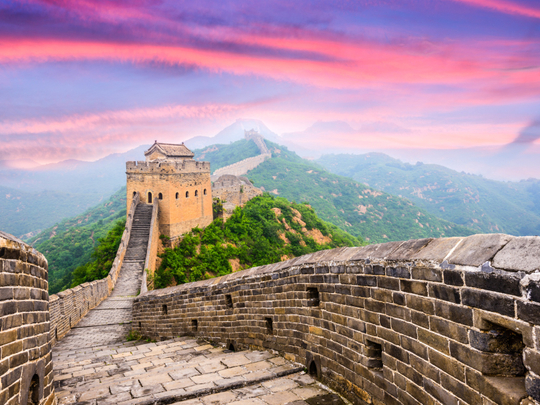
Make 2017 count by visiting these beautiful wonders, slowly losing the battle against humans and nature.
1. The Great Wall of China
Once wrongly believed to be the only man-made site visible from space, this wonder might be slowly giving in, to nature’s forces and to human traffic. According to reports, 30 per cent of the wall (around 2000 metres) has disappeared due to natural corrosion and human damage. Graffiti, theft of bricks and rising tourist inflow are some of the human factors involved.
2. Michelangelo’s Sistine Chapel
'The Agony and the Ecstasy' by Irving Stone will give art enthusiasts an idea of how Michelangelo created this wonder. The ceiling of Sistine Chapel took him four years to paint, almost blinding him. He worked every day on a makeshift stand face up, as the wet colours dropped on to his face and eyes.
Flash photography, the carbon dioxide that millions of tourists breathe out in the chapel, moisture resulting from the crowds are some of the human-caused factors resulting in the deterioration of the painting. A restoration process is ongoing, while temperature and humidity within the chapel is carefully controlled.
3. The Great Barrier Reef
The iconic and beautiful barrier reef will never be the same again. Two-thirds of the expansive reef has already died or is on the verge of dying due to coral bleaching, a side effect of rising global temperatures. While bleaching has been an annual event during warm seasons, this time the damage is permanent owing to repeated instances of the process as well as rising ocean temperatures year round.
4. The Taj Mahal
One of the Seven Wonders of the World, the monument has always been known for its ivory-white flawless marble and Shah Jahan’s love story. However, the marble tomb is slowly turning yellow due to multiple reasons, most of which are caused by humans.
The rising pollution in the city of Agra, over six million tourists visiting every year, moisture and gases due to crowd, mining in the nearby areas and sandy winds from Rajasthan are the major reasons for this discoloration. There is also Yamuna, once the beautiful backdrop for Taj Mahal, slowly becoming the most dangerous aspect for the building. The lack of strong banks and good river flow is slowly eroding the foundation of the mausoleum.
5. Pompeii ruins in Italy
The ghostly ruins of ancient Pompeii (Pompei in Italian) is one of the world's most engrossing archaeological experiences because the ancient town wasn't blown away by the volcanic eruption of Mount Vesuvius but was buried under a layer of lapilli or burning fragments of pumice stone.
The people of the town were wiped out by the event, but the Roman way of living was perfectly preserved for years under the lapilli layer. The walls of this ancient city have crumbled time and again owing to heavy rains and winds in the area. The layer of volcanic dust is no longer protecting this archaeological treasure.











